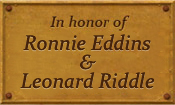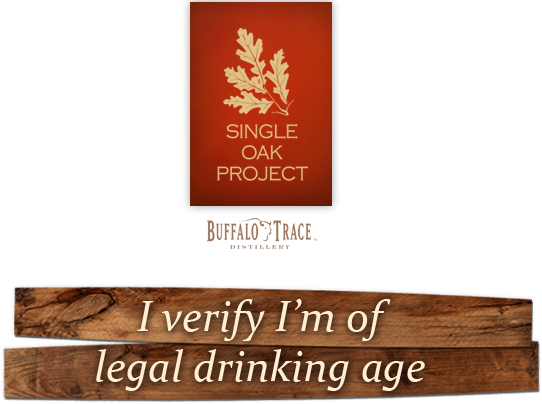How do I become an expert?
Once you have a bottle, invite some friends over or indulge by yourself. Be sure to pay attention to the Color, Aroma, Mouth-feel, Flavor and Finish of the whiskey you are drinking.
How to Evaluate These Whiskeys
Color
When judging the color of a bourbon, start first by carefully choosing the glass you pour it in. A crystal glass will show you the truest color, but avoid the cut crystal glasses that are often made for whiskey. The cuts can distort the hues and mislead your eyes.
While you’re picking out a glass, choose one that is tulip-shaped, like a wine or cognac glass. The shape will come in handy when you’re testing aroma.
Test the color in a well-lit room, with the glass sitting against a white backdrop. When
considering color, swirl the glass around and see how light or dark the bourbon appears. You
may notice little tear-like drips that slowly move down the sides of the glass — these
are called legs. Clarity is decided by holding the glass up to the light and judging how
transparent and bright it is.

Aroma
To get the best aroma, start with a tulip-shaped glass, like a wine or cognac glass. Warm the glass in your hands for a moment, swirl the spirits in the glass, then take your first smell. Try not to take in a huge whiff of air; a few short sniffs should do the trick. Then, if you’d like, take a breath of fresh air or sip of water and sniff again.
When whiskey and wine tasters talk about intensity of the aroma, you might hear them describe the drink as "open" or "closed." Think about standing outside your kitchen window while someone is baking a pie inside. If the window is wide open, you’ll be exposed to a multitude of smells from the kitchen: the buttery crumbles, the tart apple filling, maybe even a slightly burnt crust scent. If it’s shut, you might get enough smells to recognize there’s something baking, but you probably wouldn’t know it was apple pie. Keep this analogy in mind when rating the aroma of your bourbon.
Aromas change as the bourbon sits and also as water is added, so dilution is key to a good analysis. When diluting, be very careful not to add too much water. Start with a teaspoon of water and add more until you feel no burning sensation on your nose when sniffing. Usually this happens when only 20-30% of your drink is alcohol, but trust your nose.
Adding the water should open up the bourbon and help you single out aromas more easily. When testing the aroma of a diluted drink, start by placing your nose above the rim of the glass. This will help you identify the bourbon’s "bouquet" of scents, or the primary aromas. Putting your nose a little deeper into the glass, below the rim, will allow you to inhale the full aroma and determine secondary scents that you may not have caught in the bouquet.
The best way to test the development of the aromas is to let your bourbon sit out for around
30 minutes to settle and breathe. Waiting will also help your nose recover from all the
bourbon-sniffing it’s been doing the last several minutes. If you don’t have 30 minutes to
spare, don’t sweat it — just leave the glass alone for as long as you can stand and smell it
again, trying not to swirl the glass.

Mouth-feel
The mouth-feel means exactly what it sounds like — how the bourbon makes the inside of your
mouth feel. This mostly means texture. At this point, you should have already noted the
texture of the bourbon based on its appearance, but testing mouth-feel allows you to see if
your eyes told you the same thing about the drink’s texture as your tongue. Using words like
"creamy" or "smooth" gives a clearer impression of the texture than you could likely record
only by looking.

Flavor
Your nose can recognize over 32 primary aromas, but your tongue can really only categorize four: The tip of your tongue picks up sweetness, the middle of your tongue picks up sourness, the sides recognize saltiness, and the back of your tongue reports bitterness. When tasting your bourbon, keep in mind that not all of these primary tastes will occur during your sample, but some may occur twice. For example, you could attest that the bourbon starts off sweet, then feels dry in the middle, but ends sweet again as you swallow. Be sure to write all of these sensations down.
Interestingly, the flavors you often recognize in bourbon — smokiness or fruitiness, for
example — are not actually caught by your taste buds. These are aromas that are going back
through your nasal passages as you taste, creating a perceived flavor on your tongue. To
differentiate these more specific flavors from the four Primary Tastes, we’ll call them
Overall Flavor. These may be the same as the aromas you noted earlier, or you may actually
only be able to "taste" some of the flavors you were able to smell earlier. Or, the taste
could yield new flavors entirely!

Finish
A good bourbon won’t leave you high and dry after you’ve had a taste … it will linger. Thus, the finish is an important part of the process of reviewing your bourbon.
"Finish" describes both the flavor you are left with and the duration of time that flavor stays in your mouth. Experts typically describe a whiskey’s finish as long, medium, or short. Think of "short" as a taste that leaves the senses almost instantly, "long" as one that lingers for several minutes after you swallow.
The finish flavor of a good bourbon will mirror, or complement the aromas and flavors you
originally associated with the whiskey when smelling and tasting it. Clearly, if those
flavors and aromas were ones you enjoyed, a long pleasant finish is most desired.




